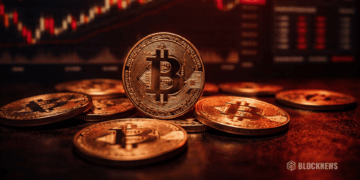- A proposal has been made for Hong Kong to issue its own stablecoin, known as HKDG, which is envisioned to be backed by the city’s substantial foreign exchange reserves
- This move aims to directly challenge the dominant positions of USDT and USDC in the stablecoin market.
- The proposed government-backed HKDG could have numerous advantages including promoting de-dollarization, providing additional liquidity for government investment projects, and assisting in the digitalization of traditional assets in Hong Kong.
In an ambitious bid to reposition itself as a major player in the digital asset ecosystem, Hong Kong has received a proposal to issue its own stablecoin. This move not only aligns with the global rise in popularity and acceptance of cryptocurrency but also places the city-state in direct competition with established players like Tether (USDT) and USD Coin (USDC).
Pushing for the HKDG Stablecoin
Hong Kong’s proposed stablecoin, dubbed HKDG (G for Government), is the result of a collective effort between esteemed personalities from the tech and finance sectors. Among the proponents are Wang Yang, Vice Chancellor of the Hong Kong University of Science and Technology and Chief Scientific Advisor of the Hong Kong web3 Association, angel investor Cai Wensheng, BlockCity founder Lei Zhibin, and Ph.D. student Wen Yizhou. The stablecoin is envisaged to be supported by Hong Kong’s substantial foreign exchange reserves, directly challenging the current supremacy of USDT and USDC in the stablecoin market.
The team’s vision is that the introduction of a stablecoin tied to the Hong Kong dollar could exponentially bolster the city’s standing in the blockchain industry and expedite the development of a digital Hong Kong dollar. By enhancing transaction efficiency, reducing transaction costs, and upgrading existing payment systems, the move could take Hong Kong’s fintech capabilities to new heights. Furthermore, the stablecoin could increase the efficiency and inclusiveness of Hong Kong’s financial system, fostering a broader spectrum of financial innovations.
Challenging the Current Government Stance
The proposal takes issue with the Special Administrative Region (SAR) government’s current approach, which only encourages private institutions to issue Hong Kong Dollar stablecoins. The authors argue that this approach is overly conservative and does not match the SAR government’s digital assets and economy agenda. Using the Singapore Dollar stablecoin (XSGD) as an example, they illustrate how privately issued stablecoins may struggle to gain significant market share, thus becoming marginalized.
In contrast, a SAR government-backed HKDG, with the city’s foreign exchange reserves as its support base, could offer greater credibility and lower risk. Hong Kong’s foreign exchange reserves, as of March 2023, stood at a massive 430 billion USD, far surpassing the combined market capitalization of USDT and USDC at 120 billion USD.
Advantages of the Proposed HKDG Stablecoin
Aside from the financial implications, issuing HKDG would allow Hong Kong to make significant strides towards de-dollarization, challenging the prevailing dominance of the U.S. Dollar within the crypto ecosystem. This move also aligns with Hong Kong’s recent intentions to reclaim its status as a global crypto hub. The city has been actively fostering its position in the digital economy, demonstrated by establishing a web3 task force to build a robust ecosystem in the region.
The HKDG could provide additional liquidity for government investment projects, assist in the digitalization of traditional trillion-dollar assets in Hong Kong, and promote easier supervision and risk management compared to private institution-issued stablecoins. Most importantly, it can boost financial innovation and increase the attractiveness of Hong Kong as a hub for Web3 related enterprises and projects.














